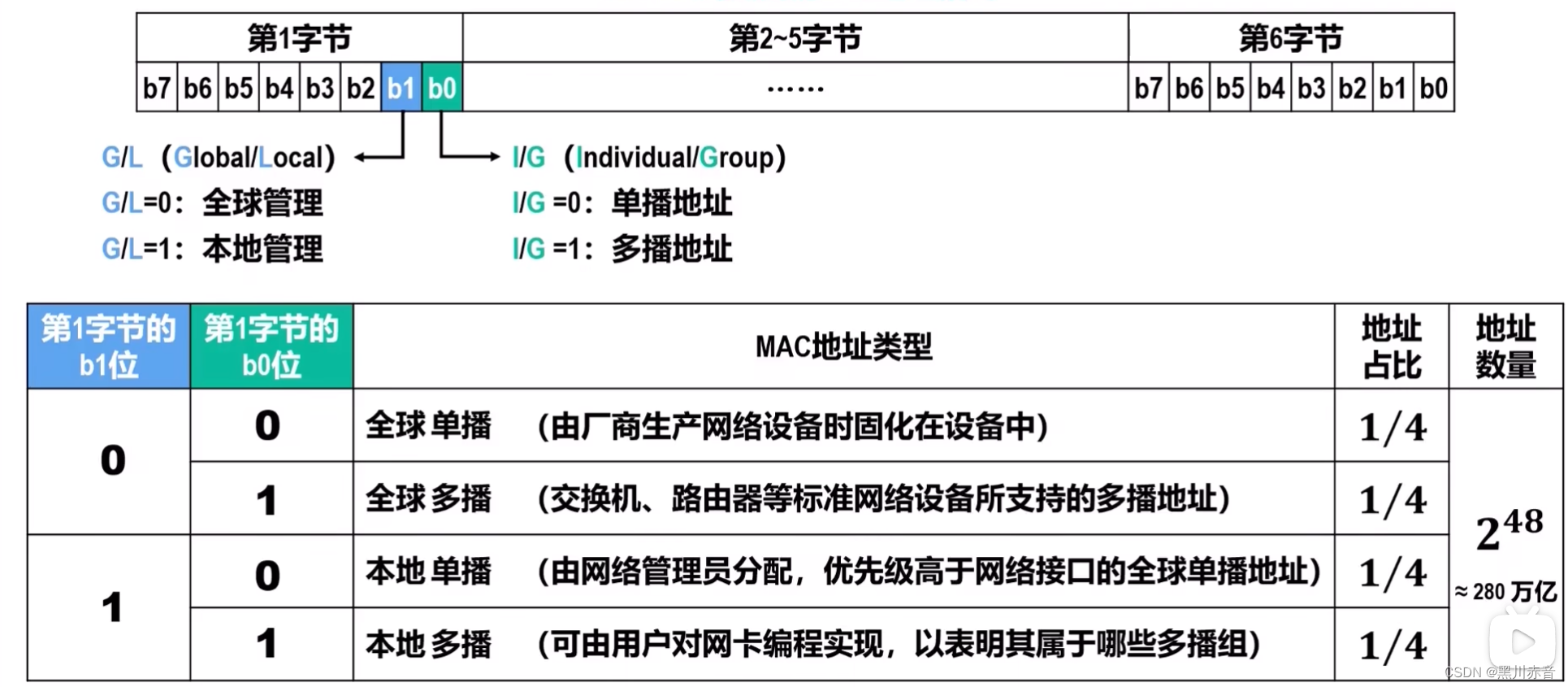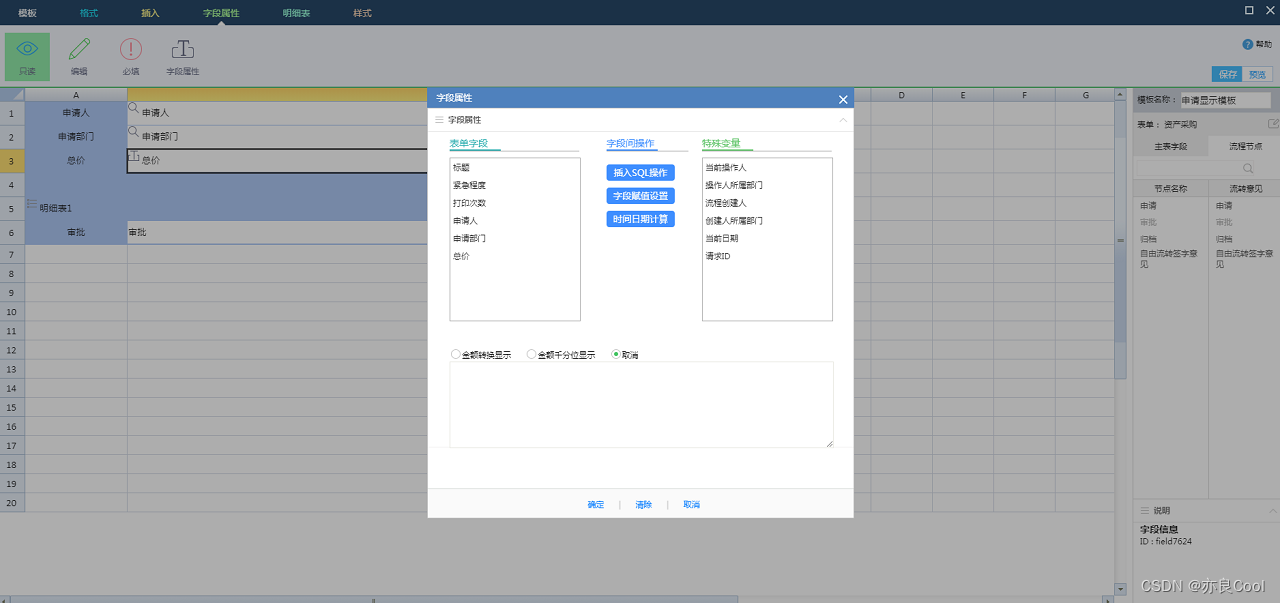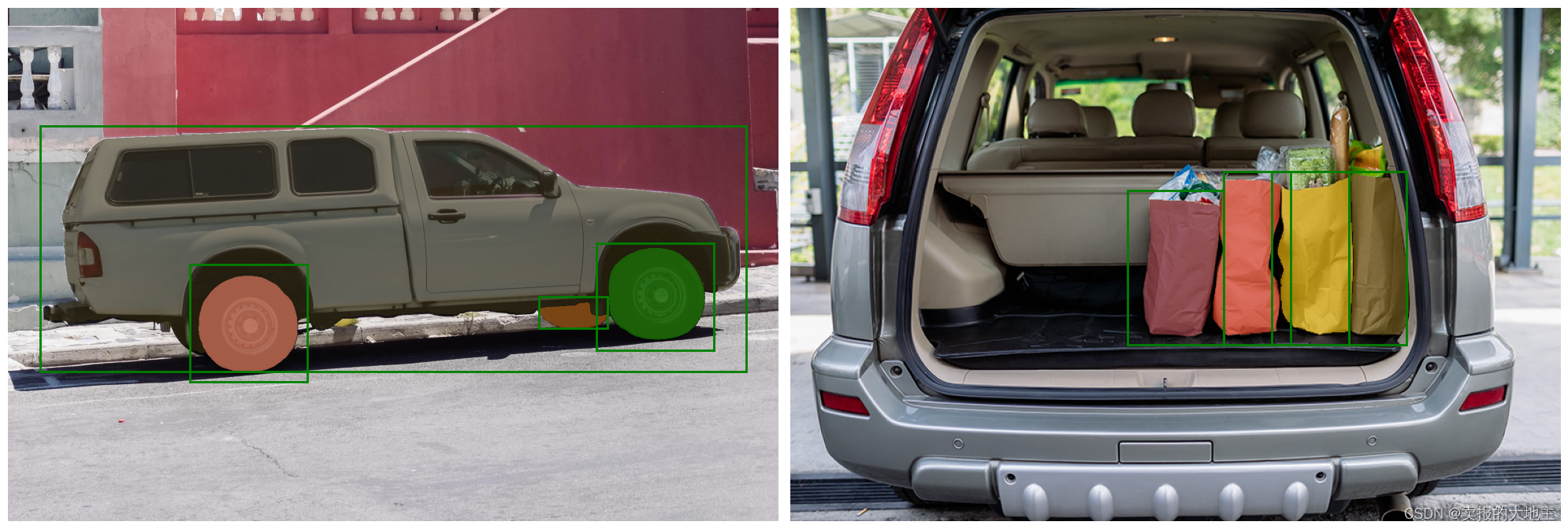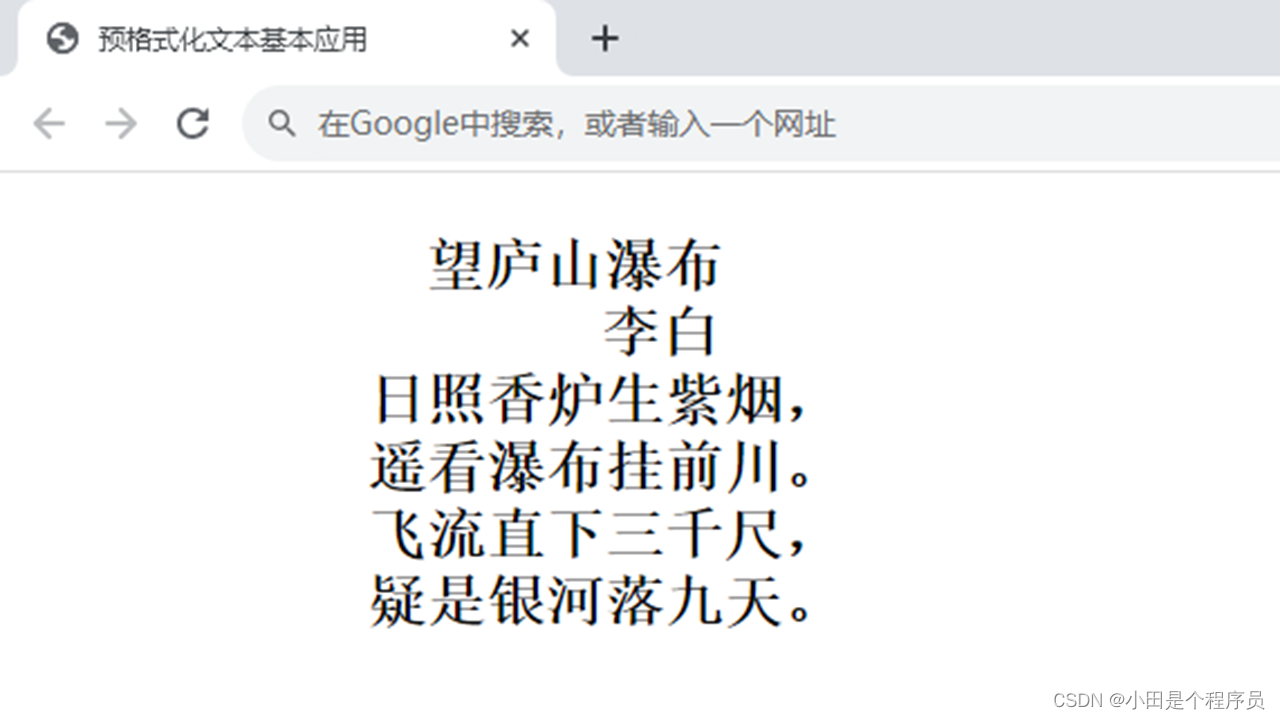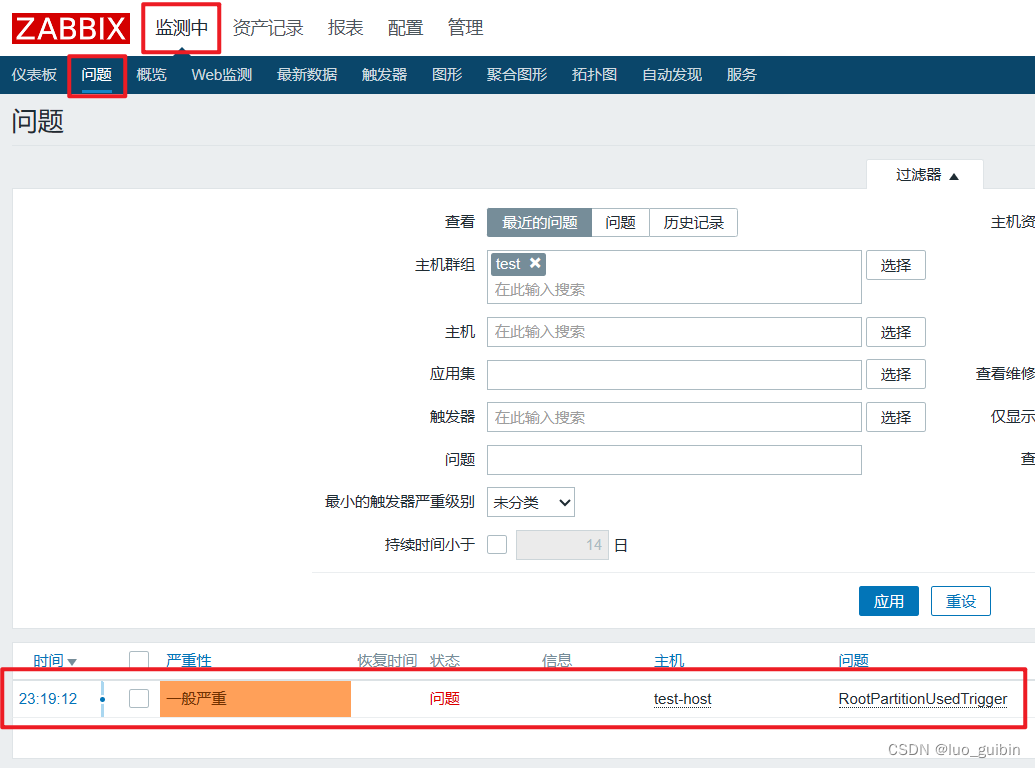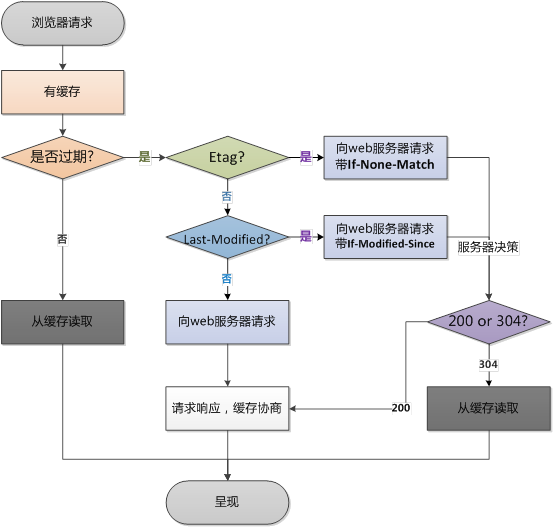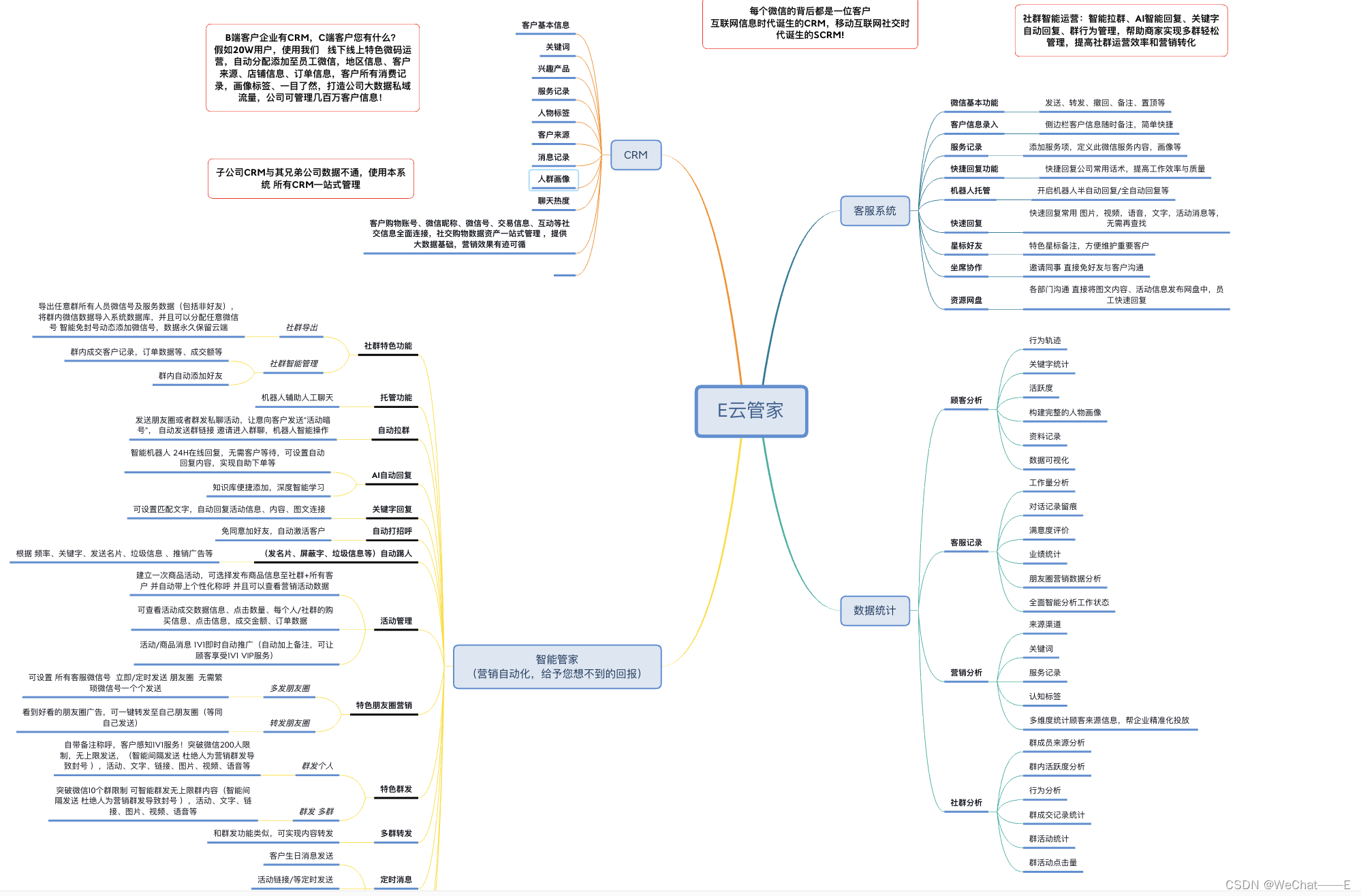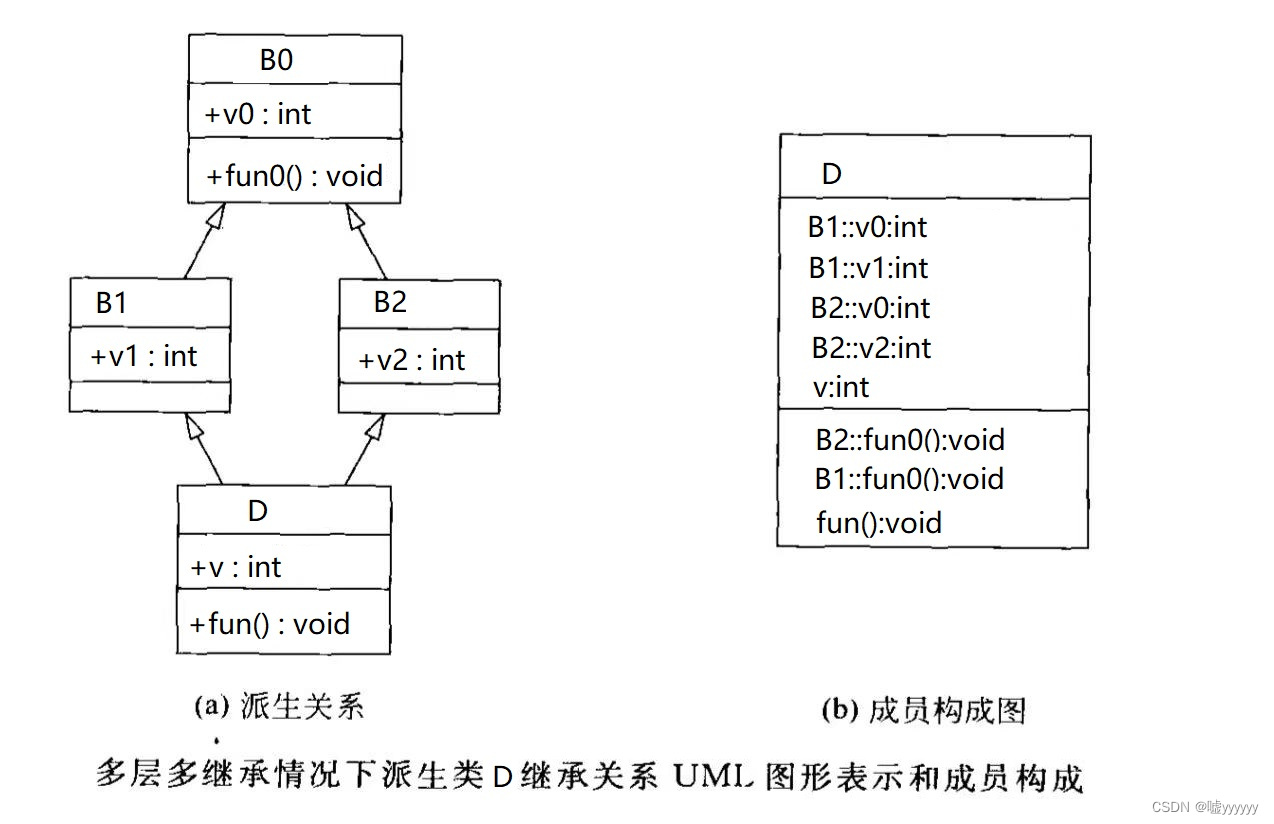文章内容
1.栈
2.队列
文章内容
1.栈
1.1栈的概念及结构
栈:一种特殊的线性表,其只允许在固定的一端进行插入和删除元素操作。进行数据插入和删除操作的一端称为栈顶,另一端称为栈底。栈中的数据元素遵守后进先出LIFO(Last In First Out)的原则。
压栈:栈的插入操作叫做进栈/压栈/入栈,入数据在栈顶。
出栈:栈的删除操作叫做出栈。出数据也在栈顶。
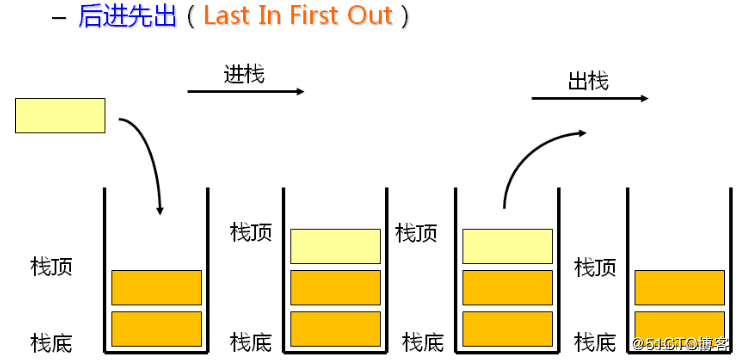

1.2栈的实现
栈的实现一般可以使用数组或者链表实现,相对而言数组的结构实现更优一些。因为数组在尾上插入数据的代价比较小。
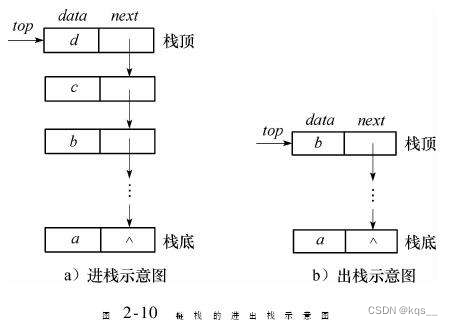
栈的实现可以参考以前的顺序表及其链表!
#pragma once
#include <stdio.h>
#include <stdlib.h>
#include <assert.h>
#include <stdbool.h>
typedef int STDataType;
typedef struct Stcak
{
STDataType* a;
int top;
int capacity;
}ST;
void STInit(ST* ps);
void STDestroy(ST* ps);
void STPush(ST* ps, STDataType x);
void STPop(ST* ps);
STDataType STTop(ST* ps);
int STSize(ST* ps);
bool STEmpty(ST* ps);
#define _CRT_SECURE_NO_WARNINGS 1
#include "Stack.h"
void STInit(ST* ps)
{
assert(ps);
ps->a = NULL;
ps->top = 0;
ps->capacity = 0;
}
void STDestroy(ST* ps)
{
assert(ps);
free(ps->a);
ps->a = NULL;
ps->capacity = ps->top = 0;
}
void STPush(ST* ps, STDataType x)
{
assert(ps);
if (ps->capacity == ps->top)
{
STDataType newcapacity = ps->capacity == 0 ? 4: (ps->capacity)* 2;
STDataType* tmp = (STDataType*) realloc(ps->a,sizeof(STDataType)* newcapacity);
if (tmp == NULL)
{
perror("realloc fail");
exit(-1);
}
ps->a = tmp;
ps->capacity = newcapacity;
}
ps->a[ps->top] = x;
ps->top++;
}
void STPop(ST* ps)
{
assert(ps);
assert(ps->top > 0);
ps->top--;
}
STDataType STTop(ST* ps)
{
assert(ps);
assert(ps->top > 0);
return ps->a[ps->top-1];
}
int STSize(ST* ps)
{
assert(ps);
return ps->top;
}
bool STEmpty(ST* ps)
{
assert(ps);
return ps->top == 0;
}2.队列
2.1队列的概念及结构
队列:只允许在一端进行插入数据操作,在另一端进行删除数据操作的特殊线性表,队列具有先进先出FIFO(First In First Out) 入队列:进行插入操作的一端称为队尾 出队列:进行删除操作的一端称为队头。

2.2队列的实现
队列也可以数组和链表的结构实现,使用链表的结构实现更优一些,因为如果使用数组的结构,出队列在数组头上出数据,效率会比较低。
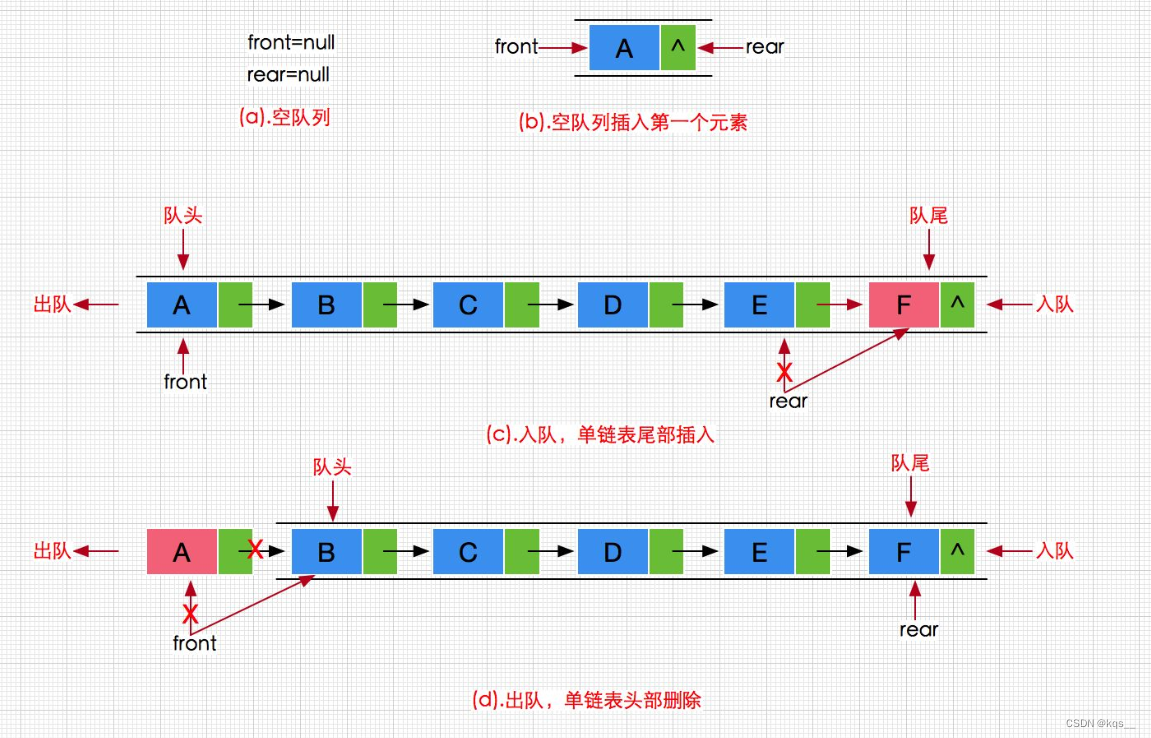
#pragma once
#include <stdio.h>
#include <stdlib.h>
#include <assert.h>
#include <stdbool.h>
typedef int QDataType;
typedef struct QueueNode
{
struct QueueNode * next;
QDataType data;
}QNode;
typedef struct Queue
{
QNode* head;
QNode* tail;
int size;
}Que;
//初始化
void QueueInit(Que* pq);
//销毁
void QueueDestroy(Que* pq);
//打印
void QueuePrint(Que* pq);
//入队
void QueuePush(Que* pq, QDataType x);
//出队
void QueuePop(Que* pq);
//判空
bool QueueEmpty(Que* pq);
//取队头元素
QDataType QueueFront(Que* pq);
//去队尾元素
QDataType QueueBack(Que* pq);
//计数
int QueueSize(Que* pq);
#define _CRT_SECURE_NO_WARNINGS 1
#include "Queue.h"
//初始化
void QueueInit(Que* pq)
{
pq->head = NULL;
pq->tail = NULL;
pq->size =0;
}
//销毁
void QueueDestroy(Que* pq)
{
assert(pq);
QNode* cur = pq->head;
while (cur)
{
QNode* next = cur->next;
free(cur);
cur = next;
}
pq->head = pq->tail = NULL;
pq->size = 0;
}
//打印
void QueuePrint(Que* pq)
{
QNode* cur = pq->head;
while (cur)
{
printf("%d->",cur->data);
cur = cur->next;
}
if (cur == NULL)
{
printf("NULL");
}
printf("\n");
}
//入队
void QueuePush(Que* pq, QDataType x)
{
assert(pq);
QNode* newnode = (QNode*)malloc(sizeof(QNode));
if (newnode == NULL)
{
perror("malloc fail");
exit(-1);
}
newnode->data = x;
newnode->next = NULL;
if (pq->tail == NULL)
{
pq->head = pq->tail = newnode;
}
else
{
pq->tail->next = newnode;
pq->tail = newnode;
}
pq->size++;
}
//出队
void QueuePop(Que* pq)
{
assert(pq);
assert(! QueueEmpty(pq));
if (pq->head->next == NULL)
{
free(pq->head);
pq->head =pq->tail = NULL;
}
else
{
QNode* next = pq->head->next;
free(pq->head);
pq->head = next;
}
pq->size--;
}
//取队头元素
QDataType QueueFront(Que* pq)
{
assert(pq);
assert(! QueueEmpty(pq));
return pq->head->data;
}
//去队尾元素
QDataType QueueBack(Que* pq)
{
assert(pq);
assert(!QueueEmpty(pq));
return pq->tail->data;
}
//判空
bool QueueEmpty(Que* pq)
{
assert(pq);
return pq->head == NULL;
}
//计数
int QueueSize(Que* pq)
{
//QNode* cur = pq->head;
//int size = 0;
//while (cur)
//{
// cur = cur->next;
// size++;
//}
assert(pq);
return pq->size;
}




